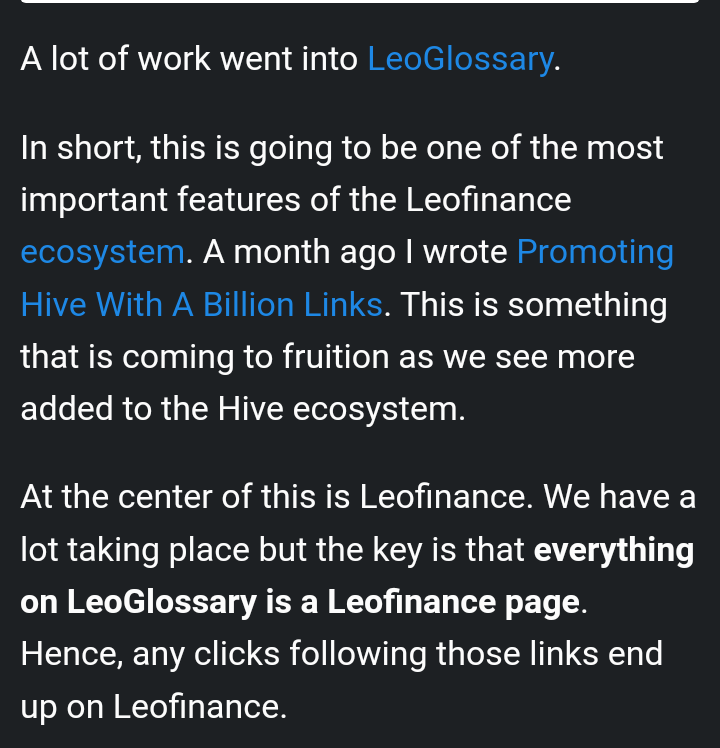It's impossible to take talk about link-building without talking about anchor text. This is because anchor text plays an important role here and it allows the search engine to understand how important a link pointing to a certain webpage is

Source
When deciding if a certain keyword or phrase using an anchor text is related to your blog post, the search engine uses the anchor text. When you ask Google about the different types of anchor text that exist, a lot of results will pop and you will have two or more of these lists
• Exact match
• Phrase match
• Partial match
• Branded,
• Generic, and
• Naked URLs
It doesn't matter how long you have been on Hive, for one reason or another other you have explored the usage of anchor text. One such way that is common among us all is when we are sourcing our images. Although we do source images without keeping SEO in mind, we employ the presence of anchor text to make our posts neat and not look spammy with naked links.
Since I am already talking about naked links, let's start there.
Naked Links
Our blog URL falls under this category. But we tend to make use of other forms of anchor text methods when we are sharing our post links or linking back to an old post.
This is mostly those who take the time to source their posts by replacing, "source" with the title of their blog post. Others mostly leave the naked URLs. An example of places where you will find naked URLs on Hive is when we are making comments on contest posts.
Community contests like Inkwell, Cinnamon Cup Coffee, Freewriters, etc allows us to use the naked URLs on the comment section.
In the past, we have been encouraged by account promoting the power of SEO and helping Hive rank to properly source our images by taking advantage of other anchor text formats. We have been encouraged to use, "Dog feed", "loving family", or longer phrases, "The beauty of marriage", " Why love is a beautiful thing", or even sourcing by using the image's creator's name, etc. The intent was to make our alt text more descriptive thereby conveying the message in the image. This might seem like a lot of work as compared to typing, "image source", but it could have helped with SEO.
However, the purpose of this blog post is to encourage you to use more of the links provided on the Leoglossay as always. And I am going to point out instances that prove Leoglossay has taken quite an advantage of various forms of Anchor Text for your perusal.
Exact match
Of course, one of the purposes of the glossary is ranking. And when you use to link back to single words like, "Money", "Finance", "Debt", "Account", etc, you are basically telling the search engine what keyword our glossary is targeting. Again, it allows the search engine to understand what your blog post is about and how it relates to the linked keywords.
Partial match
This applies to situations where the keywords or phrases we anchored have varieties. In this case, we would point out how taskmaster links back to an older post of his when it applies to the current information he is discussing in his blog. He utilizes the glossary, for instance, he talked about, LeoGlossary Is Vital To Leofinance, and he decided to link back to his older post, Promoting Hive With A Billion Links.
This is how a phrase match works for anchoring. He targets not just one keyword but different words in the same link which includes, Leofinance, LeoGlossary, Hive, etc. And he does this with other words for context.
Branded
If we are going to use taskmaster's post again, look around, and you will see that he linked to a single word call, "LeoGlossary", you might think this should fall under the exact match category. It could.

LeoGlossary is Vital to Leofinance
But right now, I'll let you know it falls under the branded category. This is because LeoGlossary is a brand. Even if you are linking to Hive or Leofinance, you are using a Branded anchor text because all of them are brands.
Generic
I am sure we use generic anchoring on our posts. Again, it's for those who join contests and competitions. The organizers mostly ask contestants to promote the contest by adding the links of the contest post to their entries. And most people do not use the partial method of Anchoring but generic ones, like, 'if you want to join or learn more about the contest click here", others break my long sentence into, " join", "learn more", "click here", etc.
Moving forward
Without taking much of your time, it's important to point out that the moment you start using LeoGlossary on your posts, you will be taking advantage of all of these methods of text anchoring. When you try to promote an older post; when you link to certain keywords and phrases provided in the glossary; when you source your images; and finally when you submit your link under a comment section as naked links.
Whichever way you turn, you will be moving closer to helping the glossary rank. This is because every method adds up. And the fact that you employ different methods of anchor text on your blog post makes it less spammy to search engines. Instead of using one method, and making it look like you are keyword stuffing.
Posted Using LeoFinance Beta




